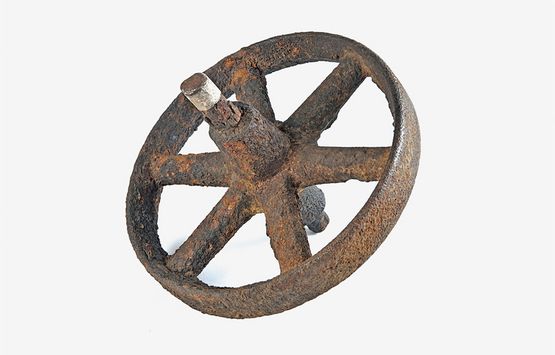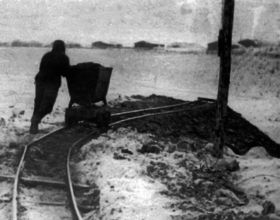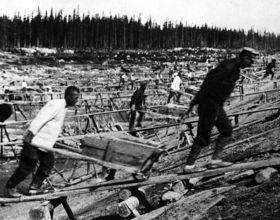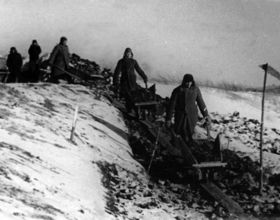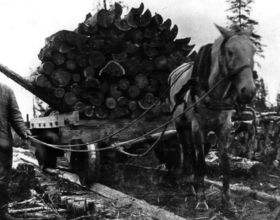
Working Conditions
The chief purpose of the camps was the economic exploitation of inmate manpower. In the eyes of the Soviet administration, the prisoners represented a readily available and replaceable resource.
The inmates performed many different types of forced labour. A working day could last as long as sixteen hours. Work orders had to be followed under the greatest time pressure and regardless of health considerations. The inmates had nothing but the simplest tools and - at most - primitive technical equipment at their disposal. Accidents were a common occurrence.

